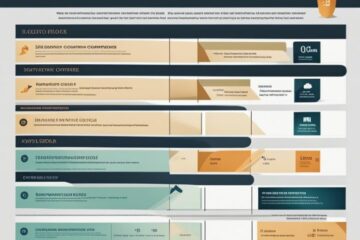Just starting a business is a significant achievement, but scaling it for long-term growth is a whole different challenge. Successful scaling requires a strategic approach, careful planning, and implementation of best practices to ensure sustained success over time.
From optimizing operational processes to expanding your customer base, there are key strategies that can help businesses grow sustainably. Understanding the risks and opportunities that come with scaling is crucial to make informed decisions and avoid common pitfalls that could hinder your growth trajectory.
By focusing on innovation, scalability, and adapting to market changes, you can position your business for long-term success and achieve sustainable growth. In this blog post, we will explore some of the best practices and strategies to help you scale your business effectively and achieve long-term growth in a competitive market.
Key Takeaways:
- Develop a Scalable Business Model: Create a business model that can easily adapt to growth without major restructuring.
- Focus on Customer Acquisition and Retention: Invest in strategies to both attract new customers and retain existing ones to ensure sustainable growth.
- Build a Strong Team: Surround yourself with skilled and passionate individuals who can help drive the business forward during periods of growth.
- Implement Efficient Systems and Processes: Streamline operations by implementing scalable systems and processes to handle increased workload effectively.
- Invest in Marketing and Sales: Allocate resources towards marketing and sales efforts to expand reach and increase revenue streams.
- Monitor Key Performance Indicators (KPIs): Regularly track and analyze KPIs to identify areas for improvement, make informed decisions, and measure the success of scaling efforts.
- Prepare for Challenges: Anticipate obstacles that may arise during the scaling process and have plans in place to address them effectively.
The Foundation of Scaling: Laying the Groundwork
Conducting a Thorough Market Analysis
While begining on the journey of scaling your business, one crucial step is conducting a thorough market analysis. Clearly, this entails delving deep into understanding your target market, competition, industry trends, and potential growth opportunities. By gathering and analyzing this data, you can make informed decisions to position your business for sustainable growth.
Moreover, conducting a comprehensive market analysis allows you to identify gaps in the market that your business can fill, differentiate yourself from competitors, and capitalize on emerging trends. This strategic approach will not only help you attract more customers but also ensure that your business remains competitive in the long run.
By conducting a thorough market analysis, you lay the groundwork for a successful scaling strategy. Armed with valuable insights, you can tailor your marketing, sales, and product development efforts to meet the evolving needs of your target audience and stay ahead of the competition.
Streamlining Core Business Processes
Scaling a business involves more than just increasing sales and expanding operations. Scaling your business also entails streamlining core processes to enhance efficiency and productivity. By optimizing key workflows, automating repetitive tasks, and implementing robust systems, you can create a solid foundation for sustainable growth.
Efficient core business processes are crucial for scalability as they allow your business to handle increased demand without compromising on quality or customer satisfaction. By streamlining operations, you can reduce costs, improve turnaround times, and create a more agile and adaptable organization that can respond swiftly to market changes.
Scaling your business starts with streamlining core processes to ensure that your operations are efficient, effective, and scalable. By identifying bottlenecks, eliminating redundancies, and leveraging technology, you can position your business for long-term success and growth.
Establishing a Scalable Business Model
Laying the groundwork for scaling your business also involves establishing a scalable business model. To achieve sustainable growth, your business model must be adaptable, flexible, and capable of supporting increased workload and expanding customer base. By designing a scalable business model, you can future-proof your operations and set the stage for long-term success.
Establishing a scalable business model requires a holistic approach that considers factors such as revenue streams, cost structures, distribution channels, and customer acquisition strategies. By Conducting a comprehensive analysis of your current business model and identifying areas for improvement, you can create a roadmap for growth that is founded on sustainable and scalable principles.
To scale your business successfully, you must establish a scalable business model that can evolve with your company’s growth. By laying a strong foundation based on a scalable business model, you can navigate the challenges of scaling and position your business for long-term success.
Financial Considerations for Scaling
Many entrepreneurs dream of scaling their business for long-term growth, but financial considerations are often a significant hurdle to overcome. Without proper planning and strategy in place, scaling can quickly drain resources and lead to cash flow challenges. In this chapter, we will research into the crucial financial aspects that business owners need to consider when scaling their operations.
Funding Options for Business Expansion
Funding is a critical aspect of scaling a business. There are several options available to entrepreneurs looking to finance their expansion. Traditional bank loans, angel investors, venture capital, crowdfunding, and bootstrapping are some of the common sources of funding. Each option comes with its pros and cons, so it’s important to evaluate which one aligns best with your business goals and financial needs. Remember that securing funding may involve giving up equity or taking on debt, so weigh the implications carefully.
It’s crucial to have a solid business plan and financial projections in place when seeking funding for expansion. Investors and lenders will want to see a clear path to profitability and a strong growth strategy. Be prepared to make a compelling case for why your business is a worthwhile investment and how you plan to use the funds to scale effectively.
Before deciding on a funding source, consider consulting with a financial advisor or mentor who can provide guidance on the best options for your specific business needs. Remember that the right funding partner can not only provide capital but also valuable expertise and connections that can help propel your growth to new heights.
Managing Cash Flow During Scaling
Scaling a business can put a strain on cash flow, especially during periods of rapid growth. It’s important to closely monitor your finances and ensure that you have enough liquidity to sustain operations during the scaling process. Implementing robust cash flow management practices, such as forecasting, budgeting, and monitoring expenses, can help you navigate through financial challenges.
One common pitfall during scaling is overestimating revenue or underestimating expenses, leading to cash flow shortages. To avoid this, develop realistic financial projections and regularly review them to make informed decisions about resource allocation. Consider negotiating favorable payment terms with suppliers and incentivizing early payments from customers to maintain a healthy cash flow.
Remember that maintaining a healthy cash flow is vital for business sustainability and growth. By staying vigilant and proactive in managing your finances, you can navigate the financial complexities of scaling with confidence and ensure long-term success for your business.
Budgeting for Growth: How-to Allocate Resources Effectively
Budgeting for growth is crucial for effectively allocating resources during the scaling process. A well-defined budget helps you prioritize spending, identify areas for cost savings, and track the return on investment of your expansion initiatives. By creating a detailed budget that aligns with your growth objectives, you can make informed decisions about resource allocation and optimize your financial performance.
When budgeting for growth, consider allocating resources strategically to areas that will drive the most significant impact on your business. Whether it’s investing in marketing campaigns, expanding your team, upgrading infrastructure, or improving processes, focus on initiatives that will generate a positive return on investment and support your long-term growth goals.
Regularly review and adjust your budget as needed to reflect changes in your business landscape and market conditions. By maintaining a flexible budgeting approach, you can adapt to unforeseen challenges and seize new opportunities for growth. Remember that effective budgeting is not just about cutting costs but about investing wisely in areas that will fuel sustainable expansion and profitability.
Building a Scalable Team
Hiring Strategies for a Growing Business
After a business identifies the need to scale and expand, one of the critical steps is building a scalable team. Hiring the right talent is paramount to success. To scale effectively, businesses should focus on hiring individuals who not only possess the necessary skills and experience but also align with the company’s values and culture. Utilizing strategic recruitment techniques such as employee referrals, networking events, and utilizing recruitment agencies can help in attracting top talent.
Furthermore, it’s vital for growing businesses to streamline their hiring process to ensure quick and efficient onboarding of new team members. Implementing thorough screening processes, including multiple rounds of interviews and skills assessments, can help in finding the right fit for the organization. Building a scalable team starts with investing time and resources in the hiring process to set a strong foundation for growth.
Continuous talent acquisition is another crucial aspect of hiring strategies for growing businesses. Even when not actively recruiting, businesses should keep an eye out for potential talent and maintain a talent pool for future expansion. By building relationships with potential candidates and keeping them engaged with the company, businesses can ensure a smooth scaling process when the need arises.
Training and Development for Scalability
One of the key factors in building a scalable team is providing adequate training and development opportunities to employees. Businesses should focus on creating comprehensive training programs that not only hone existing skills but also introduce new ones that align with the company’s growth objectives. Investing in employee development not only enhances individual performance but also contributes to the overall scalability of the organization.
Regular assessments and feedback mechanisms are crucial in training and development initiatives. By providing employees with constructive feedback and opportunities for improvement, businesses can ensure that their team members are continually growing and evolving with the organization. Moreover, businesses should encourage cross-functional training to equip employees with a diverse skill set that can be beneficial in a rapidly changing business environment.
Additionally, businesses should promote a culture of continuous learning to foster innovation and adaptability within the team. By encouraging employees to pursue ongoing educational opportunities and stay abreast of industry trends, organizations can stay ahead of the competition and drive long-term growth.
How-to Foster a Culture that Embraces Growth
Plus, fostering a culture that embraces growth is vital for building a scalable team. Strategies such as promoting open communication, encouraging collaboration, and rewarding initiative can help create a work environment that is conducive to scalability. By fostering a culture where employees feel empowered to take risks, share ideas, and pursue innovation, businesses can cultivate a dynamic and agile team that is ready to adapt to challenges and seize opportunities for growth.
Implementing mentorship programs and leadership development initiatives can also play a vital role in fostering a growth-oriented culture. By providing employees with opportunities to learn from seasoned professionals and develop their leadership skills, businesses can ensure a smooth transition of roles and responsibilities as the organization scales. Additionally, creating recognition programs to acknowledge and celebrate employee contributions towards growth can boost morale and foster a sense of ownership among team members.
Scalability is not just about expanding operations but also about building a strong foundation that can support sustainable growth in the long run. By prioritizing hiring strategies, training and development initiatives, and fostering a growth-oriented culture, businesses can build a scalable team that is equipped to navigate challenges and capitalize on opportunities for long-term success.
Leveraging Technology for Scaling Success
Automation Tools to Enhance Productivity
Once again, in the ever-evolving landscape of business, leveraging technology is crucial for scaling success. You can streamline processes and increase efficiency by incorporating automation tools into your business operations. These tools can range from simple email marketing automation platforms and BPMS solutions to complex customer relationship management (CRM), Enterprise Resource Planning (ERP) and Innovative Management Systems (IMS). Automating repetitive tasks not only saves time but also reduces the likelihood of human error, thereby improving overall productivity.
Investing in automation tools allows your team to focus on more strategic and value-added tasks that contribute to business growth. By automating tasks such as data entry, lead nurturing, and inventory management, you can free up valuable resources and empower your employees to concentrate on innovation and driving business results. Embracing automation tools is a strategic move towards scalability and sustainability in the long term.
Automation tools can significantly enhance your business productivity by reducing manual efforts, minimizing errors, and improving operational efficiency. By adopting these tools, you can create a more agile and responsive organization that is better equipped to scale and adapt to changing market demands.
How-to Choose Scalable Software Solutions
Scalable software solutions are vital for businesses looking to grow and expand their operations without constantly switching systems. When choosing software for your business, scalability should be a top consideration. Scalable software can accommodate increasing data volumes and user loads as your business grows, preventing the need for frequent system upgrades or replacements.
Scalable software solutions are designed to grow with your business, offering flexibility and customization options to meet your changing needs. It is crucial to assess not only your current requirements but also future demands when selecting software. Look for solutions that offer scalability in terms of features, user capacity, and performance to ensure long-term viability and efficiency.
Choosing scalable software solutions is a strategic investment that lays a solid foundation for sustainable business growth. By selecting software that can scale alongside your company, you can avoid disruptions, minimize costs, and optimize your operations as you expand and evolve in the market.
The Role of Data Analytics in Business Scaling
For businesses seeking long-term growth and competitiveness, data analytics plays a pivotal role in informed decision-making and strategic planning. Harnessing the power of data can provide valuable insights into customer behavior, market trends, and operational performance. By utilizing data analytics tools, you can identify opportunities for growth, optimize processes, and enhance the overall efficiency of your business operations.
Data analytics enables you to make data-driven decisions that are aligned with your business objectives and growth strategies. By leveraging advanced analytics techniques such as predictive modeling and machine learning, you can uncover hidden patterns, trends, and correlations in your data that can drive business success. Embracing data analytics as a core component of your scaling strategy empowers you to stay ahead of the competition and adapt to changing market dynamics.
Data analytics is a game-changer for businesses looking to scale intelligently and sustainably. By leveraging data-driven insights, you can optimize your business processes, enhance customer experiences, and unlock new opportunities for growth. Investing in data analytics capabilities positions your business for long-term success and resilience in a rapidly evolving business environment.
Marketing Strategies for Scaled Growth
Expanding Your Market Reach
To scale your business successfully, you need to expand your market reach beyond your current customer base. This can be achieved through various strategies, such as entering new geographical locations, targeting different demographics, or even exploring new channels of distribution. Conducting thorough market research to identify potential opportunities and gaps in the market is crucial for effectively expanding your reach.
Moreover, forming strategic partnerships with other businesses can help you tap into new markets and reach a broader audience. Leveraging social media platforms and online advertising can also be powerful tools to increase your brand visibility and attract new customers. By continuously finding ways to expand your market reach, you can ensure sustained growth for your business in the long run.
Do not forget, expanding your market reach is not a one-time effort but an ongoing process that requires consistent evaluation and adaptation. Stay agile in your approach and be willing to experiment with new tactics to reach untapped markets and increase your customer base as your business scales.
How-to Adjust Your Marketing Strategy for Growth
While scaling your business, it’s important to adjust your marketing strategy to align with the evolving needs of your growing company. As your customer base expands and your offerings become more sophisticated, your messaging and branding should also evolve to reflect these changes. This may involve refining your target audience, reevaluating your value proposition, and updating your marketing channels to ensure they are still effective.
Additionally, as you scale, you may need to invest more resources in marketing to accommodate the increased demand for your products or services. This could mean hiring additional marketing personnel, outsourcing certain marketing functions, or allocating a larger budget for advertising and promotional activities. By making strategic adjustments to your marketing strategy, you can effectively support the growth of your business while maintaining a strong brand presence in the market.
Marketing plays a crucial role in shaping the perception of your brand and driving customer acquisition, so it’s important to continuously assess and refine your marketing strategy as your business expands. By staying proactive and responsive to changing market dynamics, you can position your company for sustainable growth and long-term success.
Marketing is the lifeblood of any business, and adapting your marketing strategy is important for scaling your business successfully. With growth comes new challenges and opportunities, and your marketing efforts need to evolve accordingly to keep pace with the changing landscape. By leveraging data analytics, consumer insights, and industry trends, you can make informed decisions about how to adjust your marketing strategy to support your business’s growth objectives.
Utilizing Digital Marketing for Wider Audience Engagement
There’s no denying the power of digital marketing in today’s competitive landscape. Digital platforms offer businesses the opportunity to reach a wider audience, engage with customers in real-time, and track the effectiveness of their marketing campaigns with precision. By leveraging social media, email marketing, search engine optimization, and other digital tools, businesses can create targeted campaigns that resonate with their audience and drive conversions.
Another benefit of digital marketing is its scalability and cost-effectiveness. With digital channels, businesses can reach a global audience without the hefty price tag associated with traditional marketing methods. This opens up a world of possibilities for businesses looking to expand their reach and grow their customer base exponentially. By harnessing the power of digital marketing, businesses can stay ahead of the curve and position themselves for long-term success in today’s digital-first world.
Sales Optimization in the Scaling Process
How-to Scale Your Sales Processes
For businesses looking to scale for long-term growth, optimizing sales processes is crucial. Howto, streamline your sales processes by implementing automation tools that can help you track and manage leads effectively. One such tool is customer relationship management (CRM) software, which allows you to centralize customer information, track interactions, and identify sales opportunities. By automating routine tasks, your sales team can focus on building relationships and closing deals, leading to increased efficiency and productivity.
Howto, analyze and optimize your sales funnel to identify bottlenecks and areas for improvement. By understanding the customer journey from lead generation to conversion, you can make data-driven decisions to optimize each stage of the process. This may involve A/B testing different sales strategies, refining your messaging, or offering personalized solutions to address customer needs. By continuously monitoring and adjusting your sales processes, you can adapt to market changes and maximize your sales performance.
Howto, invest in sales training and development to empower your team with the skills and knowledge they need to succeed. Provide ongoing coaching, mentorship, and resources to help your sales representatives reach their full potential. By fostering a culture of learning and growth within your sales team, you can drive performance and achieve sustainable results as you scale your business.
Enhancing the Customer Experience for Repeat Business
Assuming you want to establish long-term relationships with your customers, enhancing the customer experience is necessary for driving repeat business. By delivering exceptional customer service and personalized interactions, you can build loyalty and increase customer retention. Focus on understanding your customers’ needs and expectations, and tailor your products or services to meet their unique requirements. By exceeding expectations and creating memorable experiences, you can turn satisfied customers into loyal advocates for your brand.
Optimization, implementing customer feedback mechanisms such as surveys or reviews can help you gather valuable insights and identify areas for improvement. Actively listen to customer feedback and use it to refine your products, services, and overall customer experience. By continuously seeking feedback and making data-driven decisions, you can enhance customer satisfaction and build a strong reputation in the market.
Assuming long-term success depends on customer loyalty and advocacy, prioritize building strong relationships with your customers. Offer exclusive promotions, loyalty programs, or personalized recommendations to show your appreciation and incentivize repeat business. By maintaining open communication channels and demonstrating your commitment to customer satisfaction, you can create a loyal customer base that supports your business as you scale and expand.
Building and Managing a Sales Team for Expansion
Building a high-performing sales team is necessary for scaling your business effectively. Building a team of skilled sales professionals who are aligned with your business goals and values is crucial for driving growth. Invest in recruiting top talent, provide comprehensive training, and create a supportive environment that fosters collaboration and innovation. By building a strong foundation with the right team members, you can set your business up for success as you expand into new markets or territories.
Managing a sales team requires effective leadership, communication, and performance management. Set clear goals, provide consistent feedback, and empower your team members to take ownership of their roles. By establishing clear expectations and accountability measures, you can drive results and maintain a high-performance culture within your sales team. Additionally, recognize and reward top performers to incentivize excellence and motivate your team to achieve their full potential.
Operational Efficiency for Long-Term Growth
Despite the exciting journey of scaling a business, maintaining operational efficiency is crucial for sustained growth. Operational efficiency refers to the ability of a business to deliver products or services to customers in the most cost-effective manner possible without sacrificing quality. To achieve this, here are some crucial tips for streamlining operations:
Tips for Streamlining Operations
- Automate repetitive tasks: Utilize technology to automate mundane tasks such as data entry, invoicing, and email responses to free up time for more strategic activities.
- Implement clear processes and protocols: Establish standardized workflows and guidelines to enhance productivity and minimize errors within your organization.
- Regularly review and optimize: Continuously assess your operations to identify inefficiencies and areas for improvement, and take proactive measures to address them.
Any successful business understands that operational efficiency is not a one-time effort but an ongoing commitment to refining processes and maximizing resources for long-term success.
How-to Implement Lean Practices for Scalability
Even the most successful businesses can benefit from implementing lean practices to drive scalability. Lean practices focus on eliminating waste and maximizing value for customers, ultimately leading to improved efficiency and profitability. By incorporating lean principles into your operations, you can optimize resources and enhance overall performance.
Howto embrace lean practices by encouraging a culture of continuous improvement and empowering employees to identify and address inefficiencies in their workflows. Implementing tools such as Kanban boards, value stream mapping, and agile methodologies can help streamline processes and foster a more agile and adaptable organization.
Navigating Supply Chain Challenges During Scaling
Some of the most significant challenges businesses face during scaling involve their supply chain. As demand increases, organizations must navigate complex supply chain dynamics to ensure seamless operations and customer satisfaction. Managing suppliers, inventory levels, transportation logistics, and production processes becomes increasingly critical to meeting growing demands.
A proactive approach to supply chain management, leveraging technology and data analytics, can help businesses anticipate and address potential bottlenecks or disruptions in the supply chain. By fostering strong relationships with suppliers and implementing robust risk management strategies, organizations can mitigate supply chain challenges and maintain a competitive edge in the market.
Risk Management and Compliance
Identifying and Mitigating Risks Associated with Scaling
On the journey of scaling a business, risks are inevitable. Identifying and mitigating these risks are crucial for sustainable growth. Risks can range from financial uncertainties to operational inefficiencies, market changes, or even regulatory compliance issues. It is necessary to conduct a comprehensive risk assessment to identify potential risks that could impact the business’s scalability. Once identified, a risk mitigation strategy should be developed to address these risks effectively.
Implementing regular risk assessments and monitoring mechanisms can help in staying proactive in managing risks. It is important to involve key stakeholders and team members in the risk management process to gain diverse perspectives. Creating contingency plans for potential risks can provide a safety net during scaling phases, ensuring that the business can navigate through challenges effectively without major disruptions.
By constantly reviewing and adapting the risk management strategy as the business scales, organizations can build resilience and agility. Embracing a risk-aware culture where risk management practices are integrated into the decision-making process can help in navigating uncertainties with confidence and ensuring long-term growth.
Ensuring Compliance at Every Stage of Growth
The compliance landscape is complex, and non-compliance can pose significant risks to a growing business. The key to ensuring compliance at every stage of growth is to stay updated with relevant laws, regulations, and industry standards. Implementing compliance frameworks and policies can help in standardizing practices across the organization and mitigating compliance risks.
Every business function should be aligned with compliance requirements to avoid legal pitfalls. Training programs and regular audits can help in educating employees about compliance standards and identifying areas of improvement. Engaging legal professionals or compliance experts can provide valuable insights and ensure that the business is on the right track regarding compliance at all times.
Every decision and strategy during scaling should be evaluated from a compliance perspective to prevent any violations. Proactive compliance management can safeguard the business’s reputation and build trust with stakeholders, paving the way for sustainable growth in the long run.
How-to Develop a Business Continuity Plan
Plan for unforeseen circumstances is necessary for business continuity during the scaling process. A Business Continuity Plan (BCP) outlines procedures to maintain necessary functions during and after a disaster or disruptive event. By identifying critical processes and establishing alternative solutions, businesses can minimize downtime and financial losses.
Developing a comprehensive BCP involves risk assessments, scenario planning, and regular testing to ensure effectiveness. Training employees on BCP protocols and communication strategies can enhance response capabilities in crisis situations. Collaborating with external partners and service providers can further strengthen the resilience of the business.
With a well-defined BCP in place, businesses can minimize disruptions, protect assets, and demonstrate preparedness to stakeholders. Investing time and resources in developing a robust business continuity plan is crucial for ensuring operational resilience and maintaining business continuity amidst challenges.
Measuring Success and Making Adjustments
Key Performance Indicators (KPIs) for Growth
There’s no doubt that monitoring Key Performance Indicators (KPIs) is crucial for scaling your business successfully. KPIs provide valuable insights into the health and performance of your business, allowing you to make informed decisions and adjustments. Regarding growth, it’s crucial to identify the KPIs that directly impact your scalability, such as customer acquisition cost, customer lifetime value, conversion rates, and revenue growth. By tracking these KPIs regularly, you can measure your progress towards your growth goals and identify areas that need improvement.
Keeping a close eye on your KPIs also enables you to spot trends and patterns that can help you forecast future growth opportunities or challenges. By setting specific targets for each KPI and regularly reviewing your performance against these targets, you can proactively address any issues and adjust your strategies for optimal growth.
Regularly analyzing your KPIs not only helps you measure the success of your growth efforts but also provides valuable data for making data-driven decisions. By leveraging KPIs for growth, you can ensure that your business is on the right track towards long-term scalability and profitability.
Adapting Business Strategies Based on Metrics
Even with a solid growth strategy in place, it’s crucial to continuously adapt your business strategies based on the metrics and insights gathered from your KPIs. KPIs serve as a compass for guiding your decisions and actions, indicating what is working well and what needs adjustment. By analyzing the data from your KPIs regularly, you can identify trends, patterns, and correlations that can inform strategic pivots.
Adapting your business strategies based on KPIs requires flexibility and agility. When you notice that certain KPIs are not meeting their targets or are trending in the wrong direction, it’s crucial to take prompt action and make the necessary adjustments to your strategies. This iterative approach to strategy development allows you to stay responsive to market changes and customer needs, ensuring your business remains competitive and adaptable in the long run.
The ability to pivot your business strategies based on KPIs is a hallmark of successful scaling. By cultivating a culture of data-driven decision-making and flexibility, you can position your business for sustainable growth and resilience in the face of evolving market dynamics.
How-to Pivot When Facing Scalability Roadblocks
Assuming you encounter scalability roadblocks along your growth journey, it’s crucial to know how to pivot effectively. Scalability roadblocks may manifest as challenges in operations, technology, workforce, or market penetration. When faced with such obstacles, it’s crucial to assess the root causes by analyzing relevant KPIs and performance metrics.
Identifying the specific areas where your business is hitting roadblocks allows you to make targeted adjustments to your strategies. Whether it’s optimizing processes, investing in technology upgrades, or refining your market approach, adapting your business strategies based on the insights from your KPIs can help you overcome scalability challenges and continue on your growth trajectory.
By embracing a mindset of continuous improvement and learning, you can navigate scalability roadblocks with resilience and determination. Leveraging the data from your KPIs to inform your decisions and actions empowers you to make strategic pivots that drive sustainable growth and long-term success for your business.
Sustaining Growth and Maintaining Momentum
Long-Term Strategies for Scale Maintenance
Not only is scaling a business challenging, but sustaining that growth over the long term requires deliberate strategies and consistent effort. Scaling requires a shift in mindset from quick wins to sustainable growth. To maintain momentum, it is crucial to invest in infrastructure, processes, and people. This includes automating repetitive tasks, implementing scalable systems, and nurturing a strong company culture that supports growth.
Regularly revisiting and updating your business plan is imperative for long-term success. This allows you to assess your progress, identify new opportunities, and pivot when necessary. Additionally, maintaining a focus on customer feedback and market trends will help you stay ahead of the competition and adapt to changing circumstances. By prioritizing continuous improvement and innovation, you can ensure your business remains relevant and resilient in the long run.
Building a scalable business is not a one-time achievement but an ongoing process that requires dedication and flexibility. Consistent monitoring of key performance indicators (KPIs) will help you track your progress and make data-driven decisions. By staying agile and responsive to market dynamics, you can adjust your strategies as needed and seize growth opportunities as they arise.
Factors That Ensure Continued Business Success
One of the key factors that contribute to sustained business success is strong leadership and a clear vision. A leader who can inspire and guide their team towards a common goal plays a crucial role in maintaining momentum and driving growth. Additionally, fostering a culture of collaboration, innovation, and adaptability will help your business navigate challenges and capitalize on opportunities.
- Investing in employee development and training to keep skills up-to-date.
- Building a resilient and diversified customer base to mitigate risks associated with market fluctuations.
- Continuously refining your products and services to meet evolving customer needs and preferences.
Assume that you have a solid foundation in place, but it is vital to consistently reassess and refine your strategies to stay competitive and sustainable in the long term.
How-to Keep Innovating in a Growing Business
One of the challenges of scaling a business is maintaining a culture of innovation as you grow. Growing businesses often face the risk of becoming complacent and resistant to change. To keep innovating, it is imperative to encourage a mindset of experimentation, creativity, and risk-taking throughout your organization. Embracing new technologies, market trends, and customer insights can help you stay at the forefront of your industry.
Whether it’s through regular brainstorming sessions, cross-functional collaborations, or strategic partnerships, fostering a culture of innovation requires dedicated effort and resources. By empowering your teams to think outside the box and pursue new ideas, you can drive continuous improvement and stay competitive in a rapidly evolving market.
Continued innovation is not just about introducing new products or services but also about finding more efficient ways to operate and deliver value to your customers. Experimenting with different business models, marketing strategies, and distribution channels can help you uncover untapped opportunities for growth and expansion. By prioritizing innovation as a core value of your organization, you can adapt to change, capitalize on emerging trends, and sustain long-term success.
Final Words
Hence, scaling a business for long-term growth requires a strategic approach that encompasses various best practices and strategies. By focusing on developing a strong foundation, fostering a positive company culture, and leveraging technology and data analytics, businesses can position themselves for sustainable growth. It is crucial for businesses to continuously evaluate their scalability and make adjustments as needed to adapt to changing market conditions and customer demands.
Moreover, investing in employee training and development, building a strong leadership team, and fostering innovation are crucial components of successful scaling. Businesses must also prioritize customer satisfaction, engage in effective marketing and branding efforts, and establish strategic partnerships to expand their reach and impact. By following these best practices and strategies, businesses can navigate the challenges of scaling and position themselves for long-term success in a competitive market.
When all is said and done, scaling a business for long-term growth is a multifaceted process that requires careful planning, flexibility, and a willingness to adapt to changing circumstances. By implementing the best practices and strategies outlined in this guide, businesses can set themselves up for sustainable growth and success. Ultimately, the key to scaling a business successfully lies in a combination of strategic decision-making, effective execution, and a commitment to continuous improvement. With perseverance and dedication, businesses can achieve their growth objectives and establish themselves as industry leaders in the long run.
FAQ
Q: What is business scaling?
A: Business scaling refers to the process of growing a business in a strategic and sustainable manner to increase its capacity, reach, and profitability over the long term.
Q: Why is scaling a business important?
A: Scaling a business is important because it allows a company to maximize its potential, increase market share, improve efficiency, and ultimately achieve long-term success and sustainability.
Q: What are the best practices for scaling a business?
A: Some best practices for scaling a business include developing a clear growth strategy, investing in infrastructure and technology, hiring and retaining top talent, focusing on customer satisfaction, and continuously monitoring and adapting to market trends.
Q: What are some common challenges in scaling a business?
A: Common challenges in scaling a business include maintaining quality and consistency, managing cash flow effectively, overcoming competition, adapting to rapid growth, and ensuring operational scalability.
Q: How can technology help in scaling a business?
A: Technology can help in scaling a business by streamlining processes, automating repetitive tasks, improving communication and collaboration, enhancing data analytics and decision-making, and enabling seamless scalability of operations.
Q: What role does leadership play in scaling a business?
A: Leadership plays a critical role in scaling a business by setting a clear vision and direction, fostering a culture of innovation and continuous improvement, empowering employees, making tough decisions, and leading by example.
Q: How can a business measure the success of its scaling efforts?
A: A business can measure the success of its scaling efforts by tracking key performance indicators (KPIs) such as revenue growth, customer acquisition and retention rates, profitability margins, market share expansion, employee satisfaction, and overall business impact and reputation.









